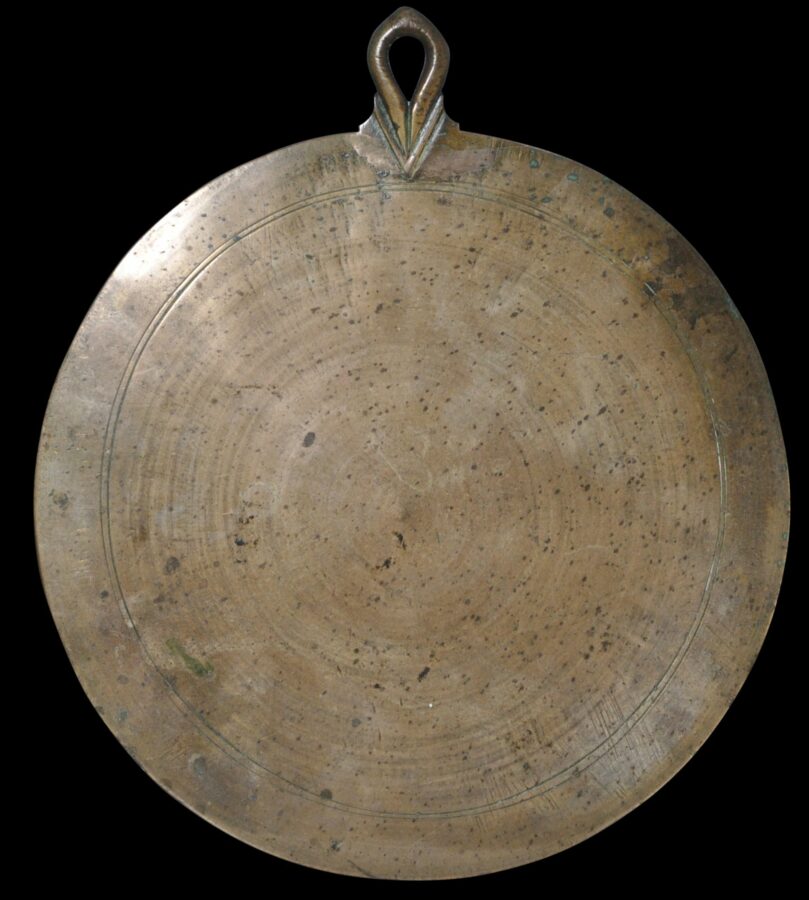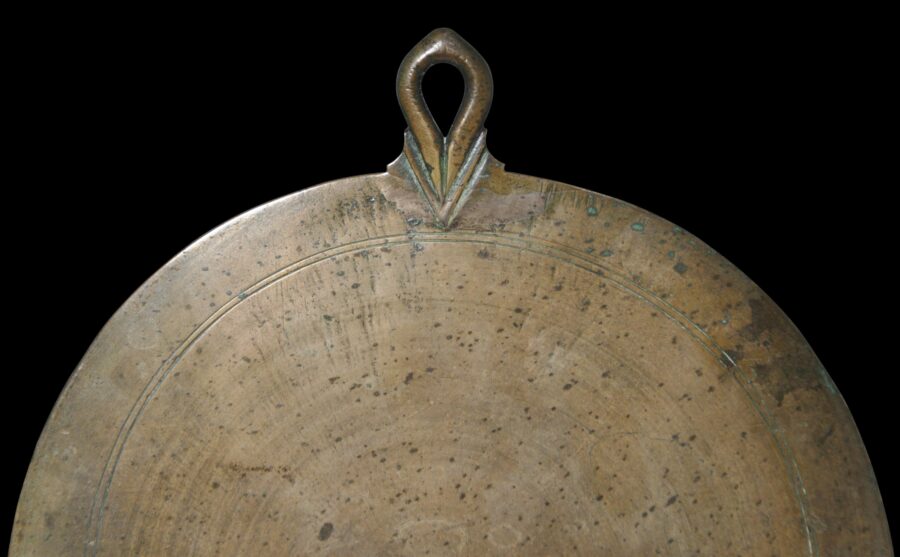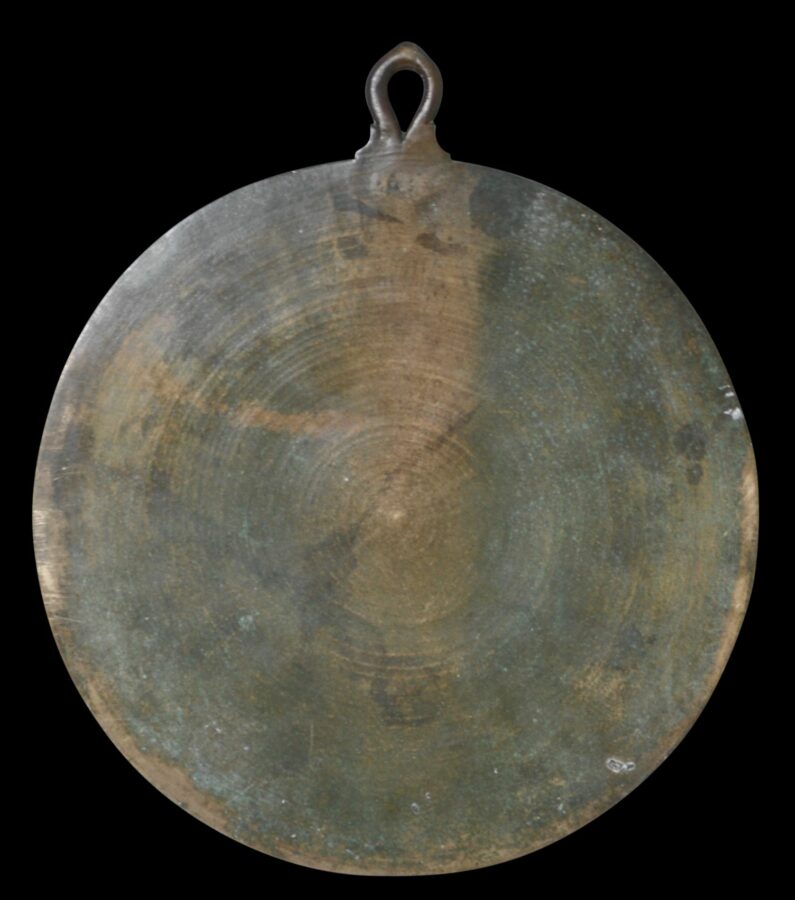This heavy mirror is of polished and gilded brass, and is an unusually large example. It has a wonderful patina.
It comprises a heavy disc of brass with a bevelled edge. A suspension loop has been attached with an unusual ‘V’ motif, which seems earlier than most other examples.
Mirrors have special meaning in Tibetan Buddhism. Ritually, they symbolise the voidness of the world and the emptiness of substances. Such mirrors were used ritually, often by oracles, and also worn as chest pieces, perhaps to repel evil. Examples of sets of mirrors that appear to have been worn by Tibetan soldiers are known. These seem to have served a talismanic, protective function. Polished metal mirrors also were hung above doors in temples and monasteries, again as protective devices.
A related example attributed to ‘circa 14th century’ is illustrated in Weldon & Casey Singer (1999, p. 141).
This example is beautiful and with a wonderful patina.
References
Lama, M.N., Ritual Objects & Deities: An Iconography on Buddhism & Hinduism, Lama Art, 2003.
LaRocca, D.J., Warriors of the Himalayas: Rediscovering the Arms and Armor of Tibet, Metropolitan Museum of Art, 2006.
Weldon, D., & J. Casey Singer, The Sculptural Heritage of Tibet: Buddhist Art in the Nyingjei Lam Collection, Laurence King/Weatherhill, 1999.




